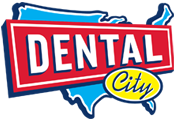
Last month the dental industry got some exciting news! The Action for Dental Health Bill—introduced to congress in May 2017—was officially signed into law by President Donald Trump, demonstrating that the government recognizes the importance of oral health and access to oral health care and education.
This bill was introduced as an amendment to the Public Health Service Act as a way to increase access to oral health care (particularly preventive services) across the U.S. with a special emphasis on currently underserved communities, such as rural areas. It was passed by the House in February of 2018 and the Senate in October.
Now that this act is officially a law $32M in funding per fiscal year from 2019 to 2022 will be allocated to achieve its planned initiatives. Of that funding each year $18M will go towards promotional programs at the CDC and $14M will be used for grants to states in support of Oral Health Workforce Activities.
A summary of the Action for Dental Health law lists five main initiatives to be achieved through this funding:
- Improve oral health education and dental disease prevention
- Reduce geographic barriers, language barriers, cultural barriers, and other similar barriers in the provision of dental services
- Establish dental homes for children and adults
- Reduce the use of emergency departments by individuals who seek dental services more appropriately delivered in a dental primary care setting
- Facilitate the provision of dental care to nursing home residents
Funding from this new law will help states work with dental care providers to come up with unique ways to serve more patients and increase preventive care to a wider variety of people—not just those with dental insurance or the financial means to easily afford it. Things like additional mobile clinics, more opportunities to educate people on proper in home dental care, and on-site visits at care facilities are just the start to achieving this law’s full potential.
Does your practice have any thoughts on how this law can positively impact the underserved populations in your communities? If so let us know in the comments!

